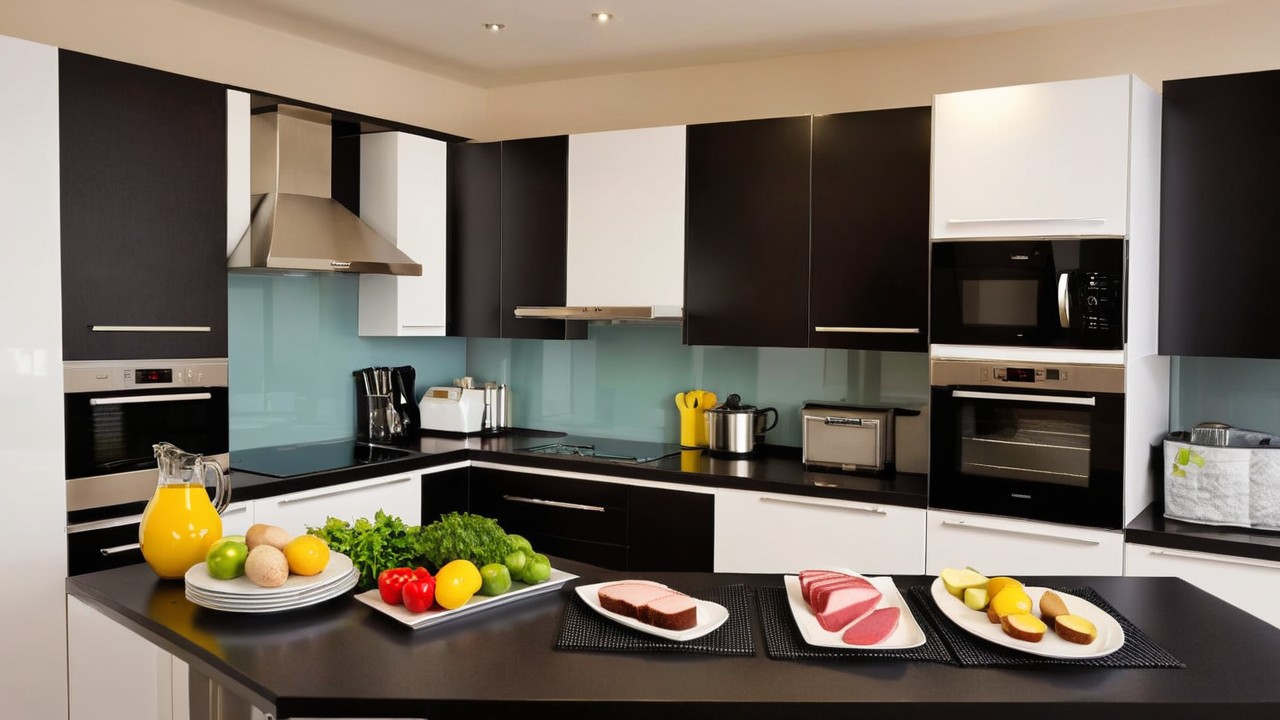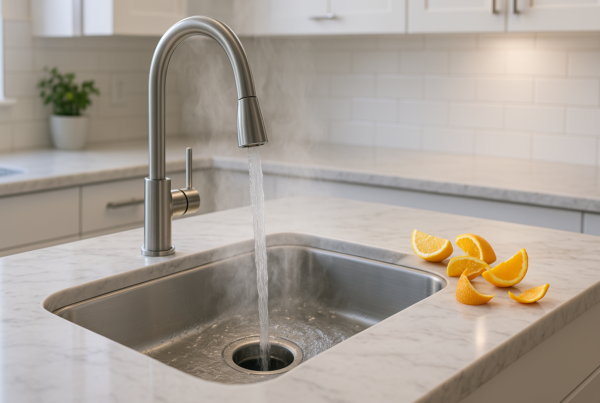Alright, let’s talk about something that nobody likes to think about but absolutely should, kitchen cross contamination prevention.
I get it. You’re busy. You’re hungry. You’re chopping chicken, tossing salad, and flipping burgers like a pro. But let me ask you, do you enjoy unexpected trips to the bathroom at 3 AM? If not, it’s time to step up your kitchen hygiene game.
Cross contamination is basically when food swaps germs behind your back. And trust me, these germs are not your friends. They’re the kind that turn a delicious meal into a food poisoning disaster.
So, how do you keep your kitchen from becoming a bacterial breeding ground? Let’s break it down.
Mike’s Kitchen Nightmare: A Cross Contamination Horror Story

Let me tell you about my friend Mike. Great guy. Terrible at kitchen hygiene.
Mike fancies himself a “home chef.” He watches one cooking show and suddenly thinks he’s Gordon Ramsay. One night, he invited me over for his “famous” chicken stir-fry. I watched in horror as he chopped raw chicken on a wooden cutting board, then, without washing, grabbed some bell peppers and started slicing. Same knife. Same board. No hesitation.
“Dude, that’s cross-contamination,” I warned.
He waved me off. “Nah, the heat will kill the germs.”
Spoiler: It did not.
At 3 AM, Mike learned the hard way why kitchen cross contamination prevention matters. His stomach staged a full-scale revolt. By morning, he looked like he’d been through a war.
The next day, he sent me a text: “Buying a color-coded cutting board set. Never again.”
Now, Mike keeps raw meat on the bottom fridge shelf, washes his hands like a surgeon, and never, EVER reuses utensils between raw and cooked food.
Lesson learned: Master kitchen hygiene or risk turning your food into a science experiment.
What Is Cross Contamination of Food?
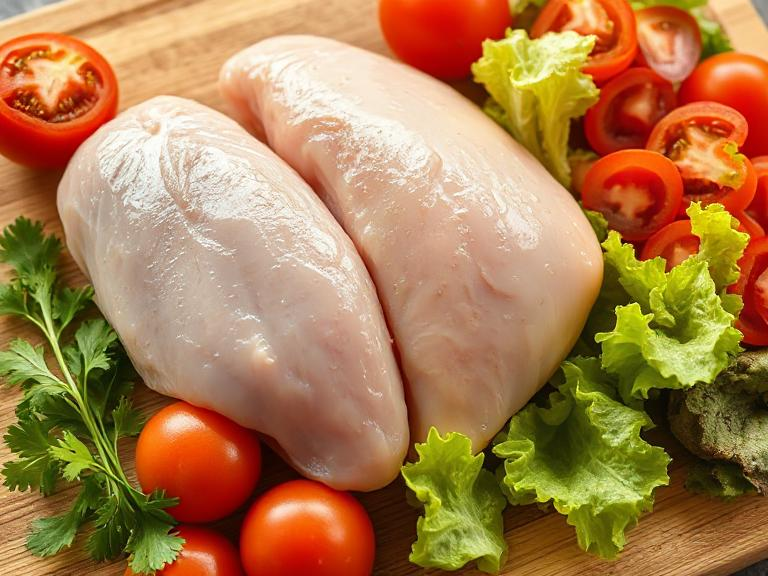
Imagine this: You slice up some raw chicken on a cutting board. Then without a second thought, you grab a tomato and start choppin, same board, same knife, no washing in between.
Congrats! You just served yourself a salmonella surprise. Cross contamination of food happens when bacteria, viruses, or other nasty stuff gets transferred from one surface (or food) to another.
And the worst part? You can’t see it happening. There are three ways of cross contamination of food you need to watch out for:
1. Direct Cross Contamination: Raw meat touching ready-to-eat food.
2. Indirect Cross Contamination: Using the same utensils, cutting boards, or unwashed hands to handle different foods.
3. Airborne Cross Contamination: Tiny bacteria floating around your kitchen, looking for their next victim.
The bad news? This happens all the time. The good news? You can prevent it.
Types of Cross Contamination: Know Your Enemies
There’s more than one way to mess up your meal. Here are the four main culprits:
1. Biological Contamination
The classic bacteria attack. (Salmonella, E. coli, Listeria… the usual suspects.)
2. Chemical Contamination
Cleaning products getting into your food. (Bleach-flavored soup, anyone?)
3. Physical Contamination
Things that shouldn’t be in your meal like hair, plastic, or if you’re really unlucky a band-aid.
4. Allergenic Contamination
Peanut traces sneaking into food, causing allergic reactions.
Avoid these, and you’re one step closer to not ruining dinner.
Kitchen cross contamination prevention (And Keep Your Stomach Safe)
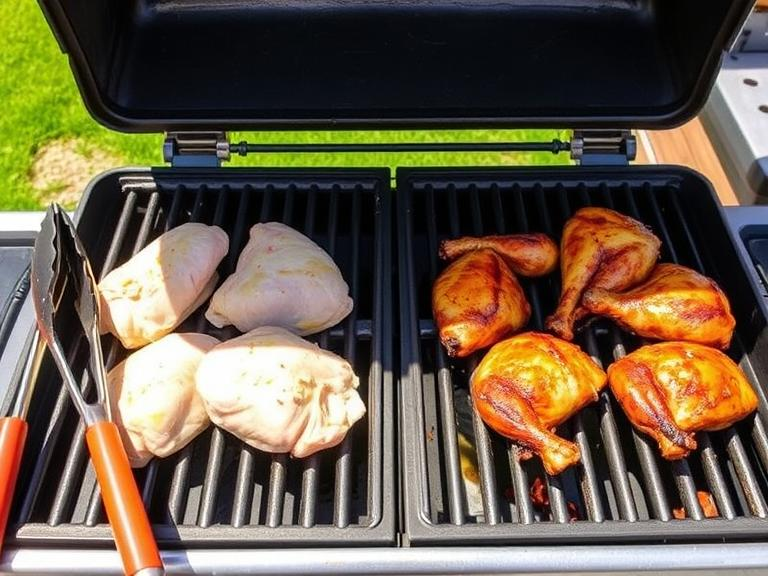
Now that you know what cross contamination of food is, let’s talk about solutions. Because unless you enjoy food poisoning, you’ll want to follow these steps.
1. Use a Color-Coded Cutting Boards Set
If you’re using the same cutting board for everything, you’re basically rolling the dice with your health.
Solution? Get yourself a color-coded cutting board set:
- Red = Raw Meat
- Yellow = Poultry
- Green = Vegetables
- Blue = Seafood
This keeps your food safe and separate which is exactly what we want.
Best Cutting Board Options:
(a) Budget: Dexas Heavy Duty Grippmat (~$8–$10)
- Color-Coded for Safety: Set of four brightly colored 11×8-inch cutting boards to prevent cross contamination in your kitchen. Perfect for raw meat, vegetables, poultry, and seafood!
- Durable & Flexible Design: Lightweight, non-porous, and non-absorbent boards that easily fold and roll to transfer food without mess.
- Non-Slip Backing for Stability: Each cutting board features a grip backing to prevent slipping while chopping, ensuring safe and easy meal prep (not reversible).
- BPA-Free & Dishwasher Safe: Made from food-safe materials, these cutting boards are dishwasher-friendly and recommended by top critics, including America’s Test Kitchen and Cook’s Illustrated.
(b) Mid-Range: Farberware Color-Coded Cutting Board Set (~$15–$20)
- Eco-Friendly & Durable: Made from 97% recycled plastic bottles, these cutting boards are a sustainable choice for eco-conscious kitchens.
- Reversible & Versatile: Enjoy two-sided cutting surfaces with three size options (8.5×11.3”, 10.8×14.5”, 12.7×17.2”) to handle all your meal prep needs.
- Non-Slip Stability: Featuring grip edges to prevent movement, ensuring safe and hassle-free chopping every time.
- BPA-Free & Easy to Recycle: Crafted from non-absorbent, odor-resistant recycled plastic, with removable silicone corners for effortless recycling.
(c) Premium: Joseph Joseph Index Cutting Board Set (~$45–$60)
- Space-Saving Slimline Case: Designed for organized storage, keeping your kitchen clutter-free.
- Knife-Friendly & Non-Slip: Double-sided textured cutting surfaces with non-slip feet for precise, safe chopping.
- Easy Selection & Accessibility: Tiered design with stainless-steel bars for quick and effortless board selection.
- Hygienic & Airflow-Friendly: Fingerprint-proof stainless-steel case holds boards separately, allowing air circulation to reduce bacteria buildup.
2. Wash Your Hands Like Your Life Depends On It
I shouldn’t have to say this, but here we are. Washing your hands before, during, and after food prep is non-negotiable.
- Scrub for at least 20 seconds (or just sing Happy Birthday twice).
- Use soap (water alone won’t cut it).
- Dry with a clean towel (not the one you used to wipe the counter).
3. Keep Raw Meat in Its Own VIP Section
You wouldn’t store dirty socks with clean laundry, right? So why would you store raw meat next to fresh veggies?
How do you prevent cross contamination in your fridge?
- Bottom shelf = raw meat. (Because gravity is a thing.)
- Use sealed containers to prevent leaking.
- Keep dairy and fresh produce far, far away.
This simple trick reduces bacteria spread and keeps your fridge from becoming a petri dish.
4. No Sharing Between Raw & Cooked Foods
This one’s simple: Raw meat and cooked meat don’t mix.
- Don’t use the same knife for raw chicken and cooked chicken.
- Don’t use the same tongs to flip raw and cooked food.
- Don’t reuse marinade from raw meat on cooked food.
If you must reuse utensils, wash them properly before using them again.
5. Disinfect Surfaces Like a Pro
Wiping a cutting board with a damp cloth does NOT clean it.
Use:
- Hot, soapy water
- A diluted bleach solution (1 tablespoon of bleach per gallon of water)
- Antibacterial sprays or wipes
Surfaces to clean regularly:
- Cutting boards
- Kitchen counters
- Sinks
- Handles (fridge, oven, cabinets)
6. Stop Playing the “Smell Test” Game
“If it smells fine, it’s fine.” WRONG. Bacteria don’t always have a smell. Food can look and smell okay but still be contaminated.
Trust expiration dates, storage guidelines, and common sense, not your nose.
How Do You Prevent Cross Contamination in Your Fridge?
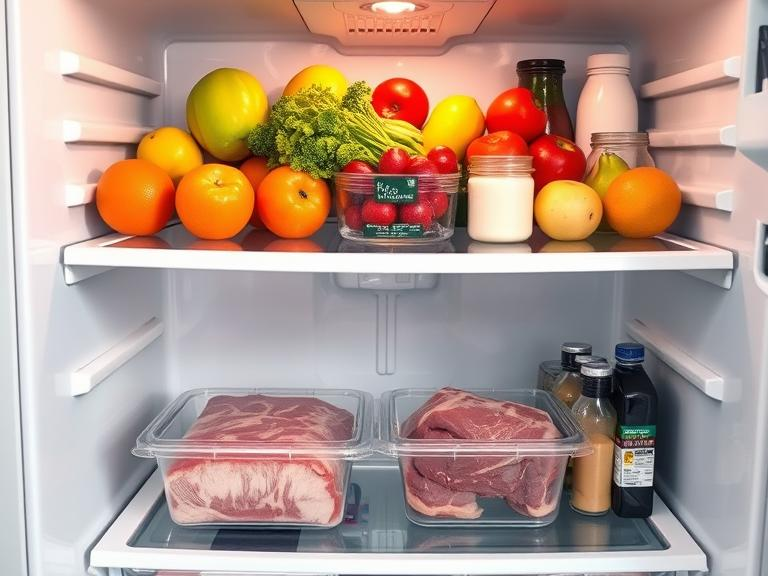
Since your fridge is ground zero for food storage, here’s how to keep it safe:
- Raw meat = bottom shelf (ALWAYS).
- Veggies & fruits = top shelf or drawer.
- Dairy = middle shelf, away from meat.
- No stacking raw meat on top of anything (unless you enjoy meat juice surprise).
These simple steps prevent bacteria from spreading and ruining your meals.
Final Thoughts: Keep It Clean, Keep It Safe
Look, I get it, kitchen cross contamination prevention isn’t the most exciting topic. But neither is food poisoning.
So, let’s recap:
- Wash your hands like your life depends on it.
- Get a color-coded cutting board set (seriously, it’s a game-changer).
- Store raw meat properly (bottom shelf, sealed containers).
- Use separate utensils for raw and cooked food, this is how to prevent cross contamination like a pro.
- Clean everything thoroughly.
Do these things, and you won’t have to worry about your next meal sending you straight to Food Poisoning Hell. Wondering how do you prevent cross contamination in your fridge? Same rules apply, keep raw meat sealed and away from ready-to-eat food.
Stay safe, stay clean, and happy cooking! Master kitchen cross contamination prevention, and your stomach will thank you.

